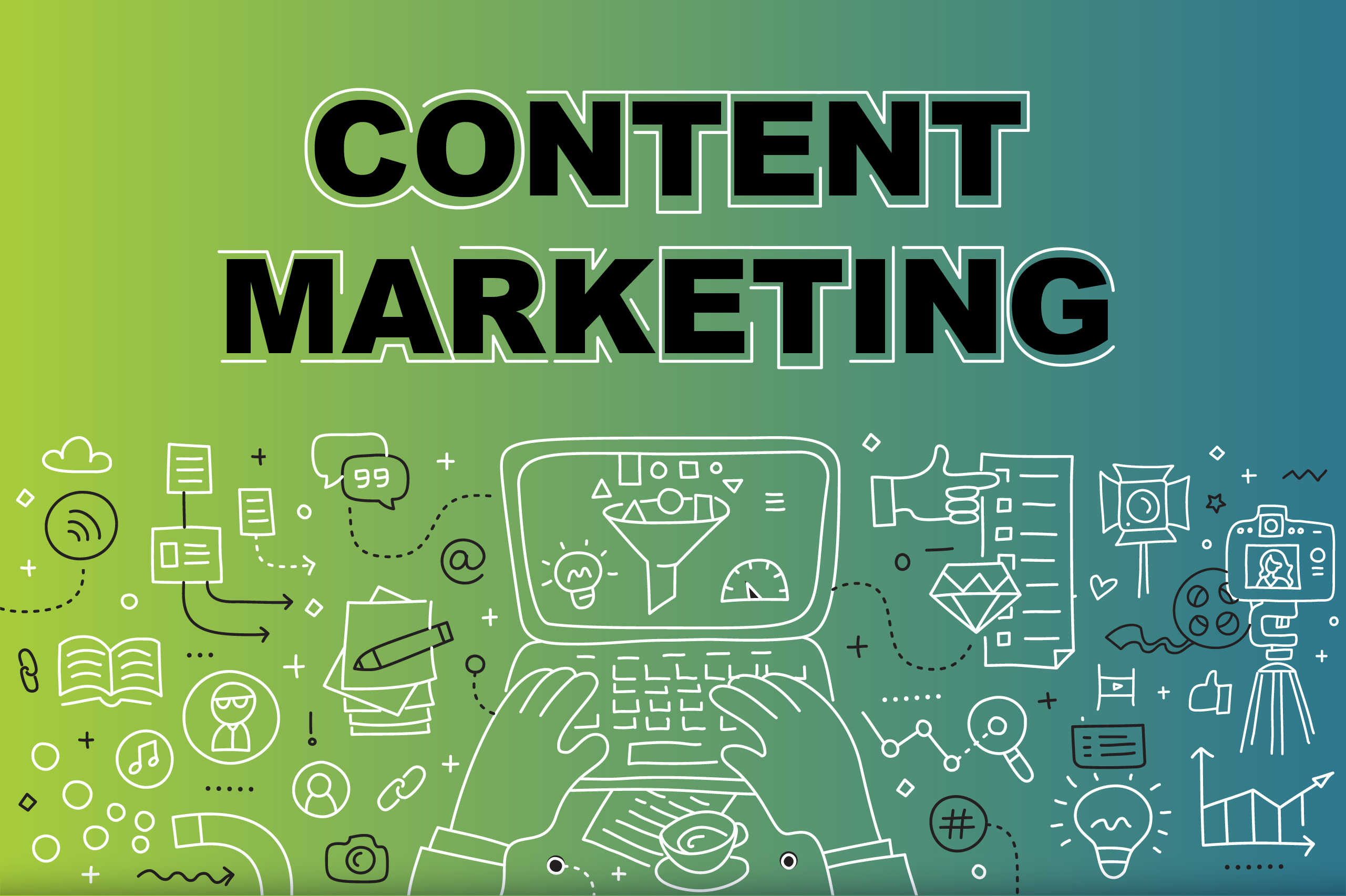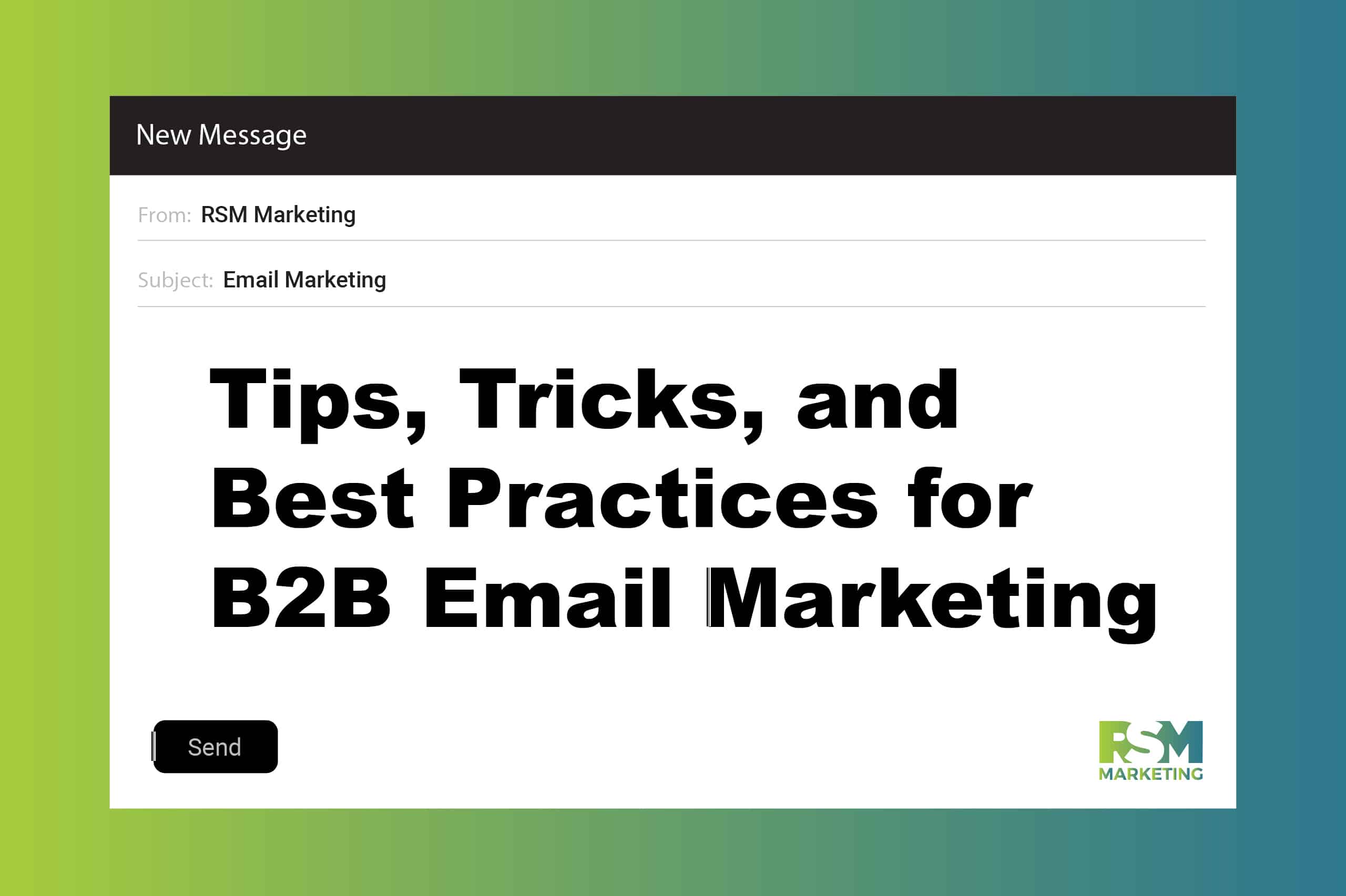Marketing Insights

Email marketing is one of the most effective ways to contact prospects for your business and is scalable for any and all business sizes.
Not only does email marketing allow you to build relationships and communicate with your audience in a personalized way, but it also yields a high return on investment (ROI). The primary investment involved in email marketing is the time spent to plan campaigns and write and design emails, rather than on expensive tech tools and fees. There are many affordable email marketing platforms, some of which even offer free plan options when you’re starting out. You can truly implement this tactic for any business of any size and with any budget.
In this blog post, we’ll cover the three main types of email campaigns, including dos and don’ts for each.
1) Cold Email Campaigns
Cold email campaigns are a series of unsolicited emails sent to a prospect without any prior interaction. This type of email campaign is comparable to cold calling but through a different form of communication. Unlike other forms of email campaigns, prospects have not requested to receive information from you, and they likely don’t know about your brand, product, or services.
The general objective for this type of email campaign is to nurture your cold prospects to convince them to take an action, such as interacting with your brand, purchasing a product, or setting up a meeting.
Cold emails differ from warm emails (emails that follow up on a previously established connection or interaction) in a couple of ways. For one, they are more sales-focused rather than marketing-focused. Since the objective of these campaigns is to get cold prospects to take an action, you need to use more sales-type language to persuade them to do so.
Additionally, cold emails do not require opt-in. Some email marketing platforms allow you to build prospect email lists and communicate with them even without prior interaction.
 Dos and Don’ts of Cold Email Campaigns
Dos and Don’ts of Cold Email Campaigns
Here are some “dos” to consider when setting up a cold email campaign:
- DO A/B test – Test your content and subject lines to determine what gets people to open and reply to your emails.
- DO involve your sales team in creating the emails – Ideally, your sales team should write these emails. If they can’t write them, they should at least be involved in finalizing the emails to ensure the copy uses the correct voice and is sales-focused.
- DO create targeted lists – There are daily send limits with cold campaigns (so you don’t come across as spammy). With this in mind, you must target company higher-ups and decision-makers. Don’t waste your emails on people who aren’t decision-makers.
- DO warm up the sending inbox – The email address you will be sending from should be warmed up, especially if it’s a new inbox. This entails creating activity to and from that inbox to ensure it doesn’t look like an inbox set up for spamming. There are auto warm-up platforms that you can use, or you can do this manually by sending emails to and from this email address.
- DO have an opt-out option – No matter what kind of email campaigns you’re running, always provide the option to unsubscribe from your communications. This is required by email regulations such as the CAN-SPAM Act and GDPR.
Here are some “don’ts” to avoid when setting up a cold email campaign:
- DON’T send to any and all prospects without making sure they fit the target – This goes back to the daily send limits and wasting those on individuals who aren’t decision-makers at a company.
- DON’T use a different email address for your campaigns – Whenever possible, use a From email for your campaign that matches the salesperson your prospect will eventually talk to. It can be jarring for prospects when they’ve been getting emails from one person but then end up on a call with another. This disconnect could be a deal-breaker for some of your prospects. If you can’t have the emails come from the salesperson, a quick email introducing them before the call or meeting is better than nothing.
- DON’T over-design the emails – Cold emails are meant to look as though you sat down and took the time to write an email to your prospect. If they are over-designed with a header, a bunch of graphics, etc. it can be more obvious that these are automated sales emails.
- DON’T send to invalid, do not send, unsubscribed emails – Sending to these emails can not only go against regulations but can get you marked as spam which will lower your email sender reputation score. Your score will affect your email deliverability and the likelihood the emails will hit a prospect’s inbox and not their spam folder.
Think cold email campaigns are right for you? Contact us about our Cold Campaign packages.
2) Drip Email Campaigns
If you have a lead magnet, downloadable, forms, etc. on your site you should have a drip campaign set up. This type of campaign is a series of automated follow-up emails sent to prospects who submit their email on your site via a form.
The overall objective for these types of campaigns is to nurture your leads coming in from your site. Drips allow you to continue marketing to these prospects to persuade them to purchase or repurchase a product, set up a meeting with your sales team, etc.
Compared to cold email campaigns this type of email is “warm” meaning the prospects have interacted with your brand and know who you are. These emails require that individuals opt-in to receive communication from you which can be achieved through your form.
Drip email campaigns can help you achieve a variety of goals:
- Webinars/event promotion – Invite individuals to register for your event and then remind them to attend your event.
- Lead magnet – Follow up with prospects who engaged with your lead magnet and guide them to the next best action.
- Membership renewals – Prompt and persuade contacts to renew their membership.
- Ecommerce purchase – Encourage customers to continue supporting your brand by repurchasing a product, leaving a review, following your brand on social media, etc.
Dos and Don’ts of Drip Email Campaigns
Here are some “dos” to consider when setting up a drip email campaign:
- DO A/B test – Just like cold campaigns you should test your content, subject line, sending timeline, etc. to determine what gets your prospects to open your emails and take the goal action.
- DO include an opt-out – As mentioned above, it is required by regulation to have an unsubscribe option for those receiving your emails. Regulations aside, there’s no reason to send emails to people who don’t want them. At best, they’ll be ignored and affect your success rate. At worst, they’ll create a bad impression of your brand.
- DO provide contacts with valuable information – When your prospects give you their email address, remember they’re giving you something valuable. Honor that by providing valuable information in exchange. This can include resources like checklists, guides and videos; money-saving offers; or other benefits that will make your prospect’s life or job easier.
- DO check your campaigns regularly – Audit your campaign frequently to make sure your emails are going out and you’re hitting your target open and click rates. As you review this, you’ll want to make sure prospects aren’t opting out of the campaign at a particular step in the sequence. This could mean some changes need to be made to that step whether it’s the content, timing, etc.
- DO set up your campaign timeline based on your sales cycle – We’ve all been on the receiving end of an email campaign that went on far too long—months or even years after we’ve already made a decision or a purchase. Match your campaign to the length of your sales cycle. If your B2B clients typically take 2 months to close the deal, that’s how long your campaign should run. After that, if a prospect hasn’t taken action but hasn’t unsubscribed, you can roll them into your monthly email newsletter to stay in front of them in a subtle way.
- DO remember to remove prospects who convert from the initial drip campaign – If you’re running a drip campaign to encourage prospects to schedule a free demo, and a prospect does, remove them from the initial campaign so they don’t continue to get prompts to do what they’ve already done! This can make a bad impression. Make sure they go to your CRM or sales team instead. You can create a second drip campaign to follow up, too.

- DON’T send emails too closely together – Sending emails back to back or closely together can frustrate your prospects and push them to unsubscribe from your campaign. Some email marketing platforms use AI to predict the best times and frequency for your emails; try using these tools and check the results. Another good basic frequency for the first few emails is an immediate email following contact, with follow-ups at 2 days, 5 days, 7 days and 10 days.
- DON’T send emails too far apart – In the same vein, you also don’t want to send the emails too far apart as people may forget why they are receiving your emails. This can then lead them to unsubscribe as well. Ideally, you’ll want to find the sweet spot for your sending which is why it’s important to regularly check your campaigns to determine if your timeline needs adjusting.
- DON’T send to invalid, do not send, unsubscribed emails – Just like cold campaigns, this is against email regulations and should not be done.
Interested in a drip campaign for your business? We can help! Contact us about our Drip Campaign packages.
3) Single Send Email Campaigns
Single send emails are timely and useful emails that strengthen awareness of a brand/product/service. These types of campaigns are one-off emails that aren’t in a series of emails like warm and cold drip campaigns. Since these emails are one-time emails they should be well branded with a clear call to action and designed to accomplish a specific predefined goal.
The goal of single send emails can vary depending on the purpose. Here are a few examples of single send campaigns and their possible goals:
- Sales and promotions – Who doesn’t like to save money? Let customers know about deals on products they care about. The more personalized, the better.
- Newsletters – Strengthen your brand and customer loyalty by sharing valuable information, resources, promotions, etc. Newsletters can also highlight company culture.
- Company alerts – Notify clients of company news such as leadership changes, acquisitions, etc.
- New products and services – Let customers know about new offerings they may find helpful.
- Trade show invitations – Encourage people to visit your booth at a trade show.
These types of emails, like warm drip campaigns, require that people within your audience have opted in to receive your communications. Individuals can sign up to receive your newsletters, company news, etc. via a form on your website.
Dos and Don’ts of Single Send Email Campaigns
Here are some “dos” to consider when setting up a single send email campaign:
- DO A/B test – As mentioned for the previous two types of campaigns, A/B testing is important to determine what time of day, day of the week, type of content, etc. will work the best for your recipients.
- DO have an opt-out option – Again, this is required by email regulations and should be included for any type of email campaigns you’re sending.
- DO segment lists – Segmenting your list by your contacts’ different characteristics, actions, locations, etc. will allow you to send more personalized communications. For example, if you want to create a campaign to promote replacing your HVAC system you may want to segment your lists to include ZIP codes with older homes as they are more likely to need a new HVAC unit. ZIP codes that have new developments with more recently built homes should be excluded. You could also use your CRM to exclude customers who you’ve installed an HVAC unit for in the last 10 years—send them information about an HVAC tune-up instead!
- DO have an engaging but clear subject line – If your subject line is boring or misleading people are likely not going to open it or they’re going to be frustrated that you weren’t clear about the contents. What they see in the subject line should be what they get in the email.
Here are some “don’ts” to avoid when setting up a single send email campaign:
- DON’T send irrelevant information – Email addresses are valuable, so only send relevant information in exchange. If you send people content that doesn’t relate to them, they will opt out.
- DON’T send to invalid, do not send, unsubscribed emails – As mentioned, this will hurt your bounce and delivery rates and will likely get you marked as spam.
- DON’T design emails with too many images – Some email providers have restrictions on image downloads and some people don’t have image downloads set up on their email. If you design an email around the graphics this will make it difficult for those with these restrictions to consume your content. You also don’t want people to have to scroll too much to get to the important information. A few images are fine, just don’t go overboard.
- DON’T write emails with too much copy – With consumers’ short attention spans you don’t want to create an email with too much copy as it likely won’t get read. Give your audience the important information as quickly as possible and then provide them with a clear call to action to do more research, get more information, etc.
Are single send emails right for your business? We’re happy to discuss. Contact us about our Single Send Email Campaign packages.
Want Some Help?
That’s what we’re here for! Whether you need some guidance on moving in the right direction or a whole lot of marketing muscle—the experts at RSM Marketing can make it happen.
Start with a simple conversation! Complete the form and one of our team members will be in touch.

 Dos and Don’ts of Cold Email Campaigns
Dos and Don’ts of Cold Email Campaigns


